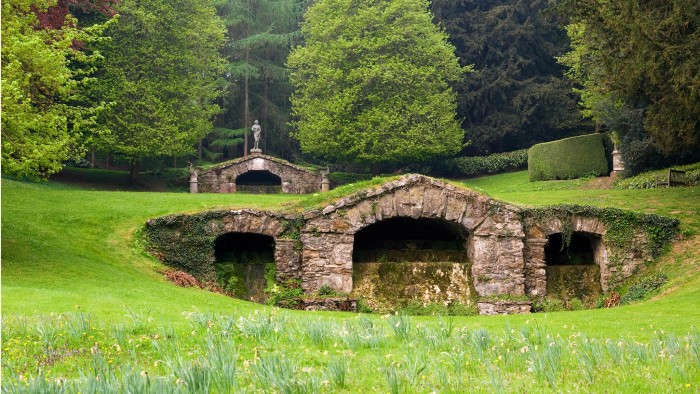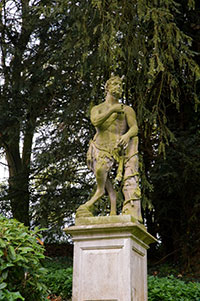William Kent’s English landscape revolution at Rousham

Roula Khalaf, Editor of the FT, selects her favourite stories in this weekly newsletter.
William Kent is sometimes seen as the founder of the English landscape movement, the style which helped to shape and mould continental Europe’s great estates as well as New York’s Central Park.
It is probably more accurate to say that the style emerged from various landscapers, including Kent’s contemporary Charles Bridgeman, and some of those associated with the pro-Whig Kit-Cat Club. The Kit-Cat Club included Kent, the poet and landscaper Alexander Pope and Joseph Addison whose garden commentaries in the Spectator leave a fascinating record of the period when landscaping was honoured as one of the fine arts.
Either way, one of the earliest and least changed examples of the English landscape style can be found at Rousham in Oxfordshire. It is still owned by descendants of General Dormer who commissioned Kent to extend the house and update the landscape in the 1730s. The garden can be read as the iconography of Dormer’s military career. It gave life-long pleasure to the old general who never fully recovered from wounds sustained at the Battle of Blenheim in 1704.
Kent stretched Rousham’s relatively small garden of just 25 acres by adding a sham ruin, the “Eyecatcher”, to the horizon beyond the River Cherwell. This gives the impression that Rousham’s landscape extends far beyond its boundaries. In Horace Walpole’s words, Kent “ . . . felt the delicious contrast of hill and valley changing imperceptibly into each other, tasted the beauty of the gentle swell, or concave scoop, and remarked how loose groves crowned an easy eminence with happy ornament, and while they called in the distant view between their graceful stems, removed and extended the perspective by delusive comparison”.

Rousham is as remarkable for its landscaping as for the ideas it represents. This is an Augustan landscape. It captures Britain’s renewed confidence as the nation looked beyond its borders to conquer, plunder, or ply trade, according to your view. Contemporaries saw the peace and prosperity of 1st-century Rome reinvented at Rousham. A Scheemakers gladiator dies picturesquely to one side of the house and bowling-green lawn. A path plunges into woodland, a ha-ha allowing long-horned cattle into the view without allowing their muddy reality into this little Arcadia where Satyr, Mercury and Bacchus live.
Classical buildings dotted through the “gentle swells and scoops” include a seven-arched Praeneste and the Temple of Echo. In the dappled shade of woodland a formal rill materialises and leads down to The Cold Bath beside an Octagonal Pool. Kent’s Venus Vale is unchanged apart from the cherubs, now vanished, that once rode the swans on either side of the goddess, and the fountains just in front of Venus, which are now rarely more than a trickle thanks to the shifting water table.
Most of what can be seen today is Kent’s work although, as at Stowe, Kent is working on a framework of cascades, fountains, square pools and wilderness created by Bridgeman. Given that the pair collaborated on several projects, Kent must have been influenced by Bridgeman and, while at Rousham, he must also have been influenced by Pope who had a room at General Dormer’s home.
Whatever its provenance, the new informal, “natural” style exemplified at Rousham is at the heart of the English landscape movement. Kent’s masterpiece is captivating and continues to fit Walpole’s description of “the sweetest little groves, streams, glades, porticoes, cascades and river imaginable”.
Jane Owen is the editor of House & Home
Visiting details: rousham.org
Comments